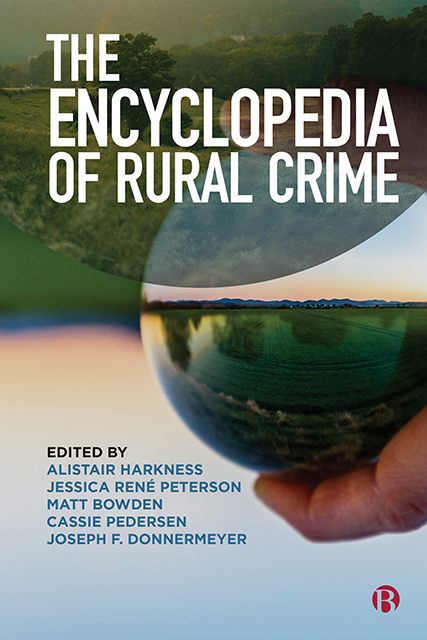Book contents
28 - Violence against Farmers
Published online by Cambridge University Press: 20 June 2023
Summary
Violence and the threat of violence against farmers is an age-old phenomenon. In 1831, widespread riots occurred as angry, distressed and poor agricultural workers in eastern and southern England attacked threshing machines, burned barns, destroyed farmhouses and maimed cows. The protests were aimed against farmers who lowered workers’ wages and against the workers’ harsh working conditions. Many farmers claimed that they could not afford to pay the workers’ daily wages, but out of fear for their and their families’ safety, fires and damage to their properties, they paid 40 per cent more wages than what they could afford to avoid losing their property and to secure their safety. Contemporaneously, violence against farmers has become a common occurrence in countries such as India, Israel, the Philippines and South Africa.
Violence against farmers as an axiom
According to De Villiers (2020), violence against farmers and attacks on farmers include any act of violence, such as assault, armed robbery, attempted murder, murder, rape and/ or any other act aimed at inflicting bodily harm against any individual living, working on or visiting a farm or smallholding.
Violence against farmers is associated with political agendas, government control, poverty, unemployment, racial issues and decreasing economies. In this regard, in India farmers protested against agriculture laws which escalated to the death of several farmers. In Israel, settler violence occurred against Palestinian farmers during harvest time, whilst in the Philippines farmers were beaten with truncheons, shot at and killed whilst protesting over government relief, emergency government funds and sacks of rice during the drought period. Doorewaard (2020) reports that the use of violence or threat of violence to gain livestock is a common occurrence in African countries, such as in Lesotho, Kenya and South Sudan. In turn, South Africa has become infamous for the brutality of farm murders and attackers using excessive violence and torture to murder farmers (see Clack and Minnaar, 2018; News24, 2020).
Distinctive features
Although not the norm with all violence directed at farmers on a global scale, many farm attacks are politically and racially motivated and driven by economic gain, the acquisition of firearms, money, weapons and tradable goods such as computers and cellular phones.
- Type
- Chapter
- Information
- The Encyclopedia of Rural Crime , pp. 111 - 113Publisher: Bristol University PressPrint publication year: 2022
- 1
- Cited by



